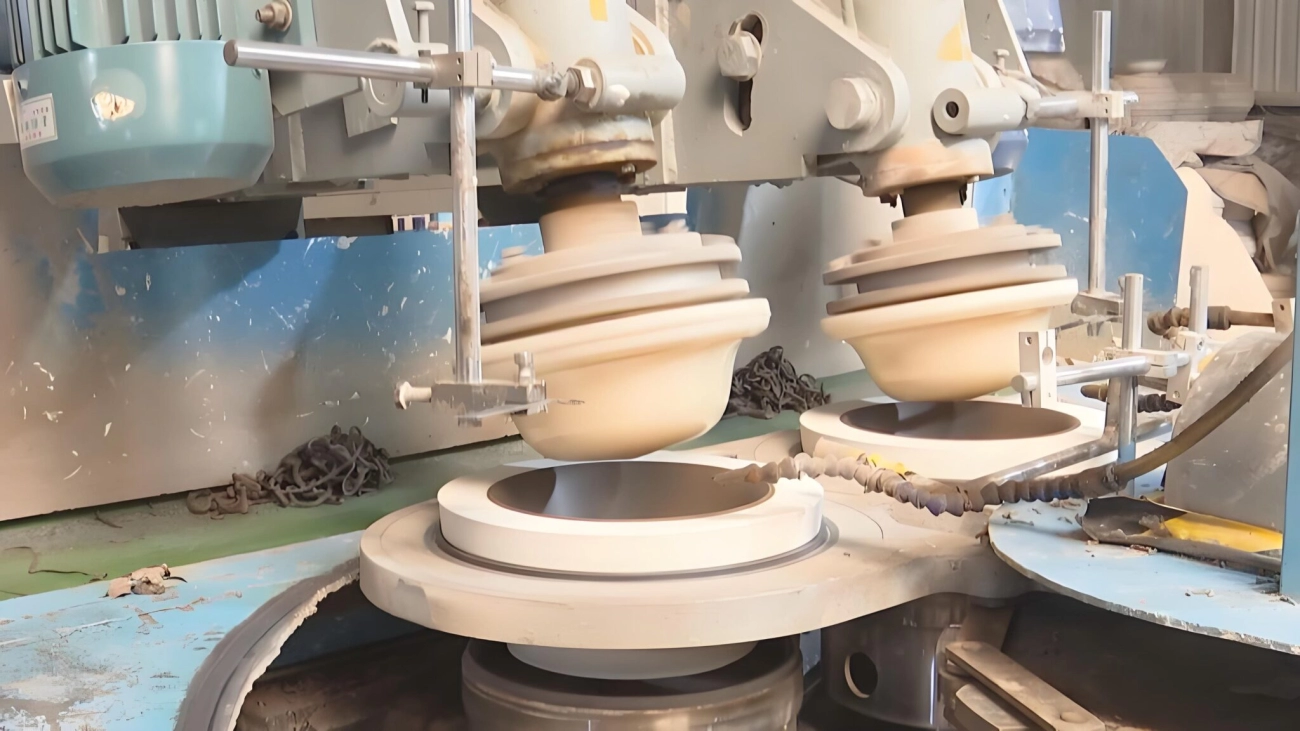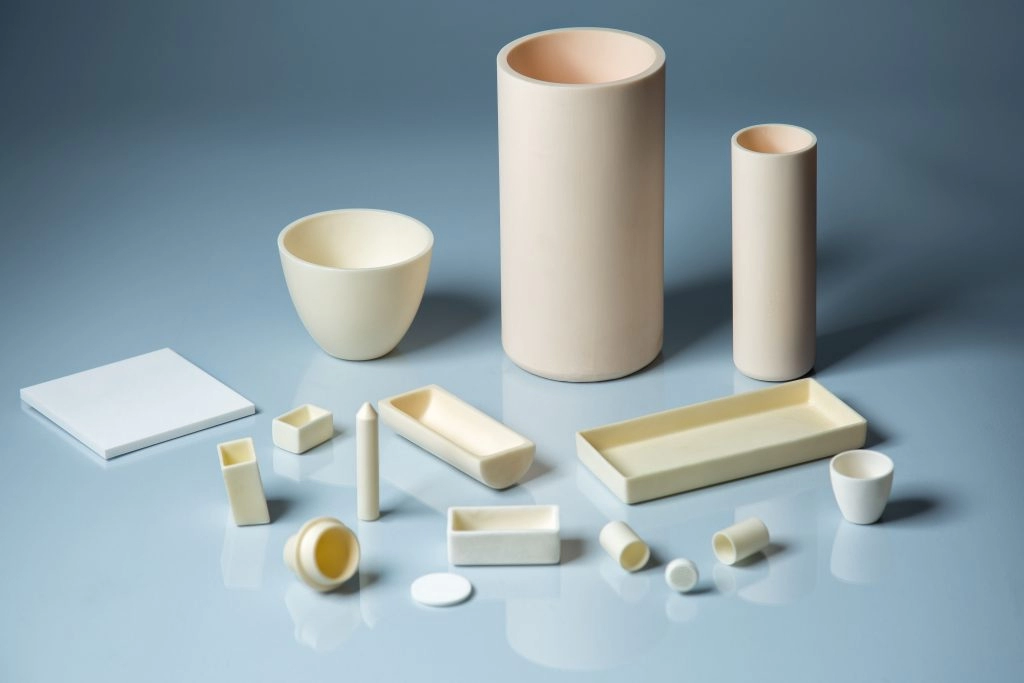Discover ceramic CNC machining with expert tips on processes, challenges, and precision parts for aerospace electronics and advanced industries.
Understanding Ceramic Materials Properties and Why CNC Machining Matters
Ceramic materials are known for their unique combination of properties that make them ideal for demanding applications. They offer exceptional hardness, excellent thermal and chemical resistance, and are well-suited for extreme environments. However, their inherent brittleness makes them prone to cracking and chipping during manufacturing, which is why precise and controlled machining methods are essential.
When it comes to CNC machining ceramics, several common types stand out:
| Ceramic Type | Key Property | Typical Application |
|---|---|---|
| Alumina | Electrical insulation | Electronics substrates, insulators |
| Zirconia | High toughness | Structural components, implants |
| Silicon Carbide | Wear resistance | Seals, cutting tools, automotive |
Non-CNC methods like manual grinding often lead to inconsistency with surface finish and dimensions, causing higher scrap rates and longer production times. CNC machining enables repeatability, precision, and efficient processing of these brittle materials, reducing risk of cracks or fractures.
Selecting the right ceramic material for CNC machining depends on your application needs—balancing toughness, wear resistance, and thermal requirements. CNC technology unlocks the potential of ceramics by delivering tight tolerances and smooth finishes that manual methods struggle to achieve.
The Ceramic CNC Machining Process Step by Step Breakdown

When it comes to ceramic CNC machining, the process starts with preparation. We begin by creating detailed CAD models of the part, then use CAM software to program precise toolpaths. This helps ensure every cut is accurate. A key step here is working with the ceramic in its “green” or bisque state—this means the material is partially fired but still softer. Machining at this stage reduces the risk of cracking after the final sintering process.
Next is execution. We use multi-axis CNC machines for milling and turning, often equipped with diamond-coated tools built for cutting hard ceramics like alumina and silicon carbide. Critical parameters like spindle speed and feed rates get carefully adjusted to keep vibrations low. Controlling vibration is essential because ceramics are brittle and can crack if stressed too much during machining.
Finally, the finishing stage involves grinding, lapping, and polishing to reach sub-micron tolerances. This step ensures the ceramic surface is smooth and fits tight specs. Coolant plays a big role here by managing heat and clearing debris away from the cutting area, protecting both the tool and the material.
Here’s a simple flow to visualize the process:
- CAD Modeling → 2. CAM Toolpath Programming → 3. Green State CNC Machining → 4. Sintering → 5. Grinding and Polishing → 6. Final Inspection
This step-by-step approach keeps precision ceramic components consistent, efficient, and ready for their toughest applications.
Tools Equipment and Best Practices for Success
When it comes to ceramic CNC machining, having the right tools and setup is key to getting top results. Diamond-coated endmills are essential since ceramics are super hard and wear down regular tools quickly. A rigid CNC machine, ideally with 4 or 5 axes, helps handle complex shapes without stressing the material, reducing the chance of cracks.
Here are some must-know tips and parameters for smooth machining:
- Vibration control is vital; even minor shaking can cause chipping or tool wear. Using balanced toolholders and steady feeds helps.
- Tool dressing keeps diamond tools sharp and effective. Proper dressing intervals extend tool life dramatically.
- Integrate your machining program carefully to avoid microcracks by controlling spindle speeds and feed rates.
- Follow this quick checklist before each run:
- Check tool sharpness
- Confirm vibration dampening
- Ensure coolant delivery is optimal
- Review CNC program for adaptive paths
Common pitfalls include overheating—too much heat damages both the tool and the ceramic—and tool wear from abrasive ceramic dust. Using slurry coolant helps manage debris and cool the cutting area. Also, synchronized tapping and peck drilling reduce tool stress.
A pro tip: integrating an in-house Coordinate Measuring Machine (CMM), like we do at Vast, supports real-time quality assurance and traceability. This means every part meets your tight tolerances before moving forward, cutting down waste and rework.
Having the right equipment, attention to detail, and good practices ensures success with ceramic CNC machining for any project.
Challenges in Ceramic CNC Machining and Proven Solutions

Ceramic CNC machining comes with its own set of tough challenges. The biggest hurdle is the material’s brittleness, which can easily cause chipping or cracking during cutting. Tooling costs are generally higher than metals, and the tough ceramic dust is a hazard that requires strict safety controls. Plus, tool life is shorter because ceramics are so hard and abrasive, leading to frequent tool wear and replacement.
To tackle these issues, many shops use pre-sinter machining, working on the ceramic when it’s still in its “green” or bisque state—this lowers the risk of cracks after sintering. Advanced CAM software helps by creating adaptive toolpaths that reduce stress on the part. Safety protocols call for enclosed systems to manage ceramic dust and protect operators effectively.
At Vast, we’ve seen big results from optimizing machining parameters, especially with zirconia prototypes. Our approach cut scrap rates significantly by controlling spindle speed, feeds, and vibration carefully. For high volume production, continuous improvements in tooling and automation help overcome brittleness, enabling consistent quality at scale.
With the right strategies, ceramic CNC machining becomes manageable and cost-effective, even with these inherent material challenges.
Applications and Industries Benefiting from Ceramic CNC Machining
Ceramic CNC machining plays a crucial role across industries where precision, durability, and specialized properties are essential. Here’s how different sectors leverage this advanced process:
Aerospace and Defense
Ceramics like alumina and zirconia are used for turbine blades and insulators due to their excellent thermal shock resistance and chemical stability. These materials perform well in extreme environments, helping improve engine efficiency and protect sensitive components.
Electronics and Medical
Precision ceramic parts made with CNC machining serve key roles in electronics and medical devices. Alumina offers reliable electrical insulation for substrates, while zirconia’s biocompatibility makes it ideal for implants. CNC machining ensures tight tolerances critical for these applications.
Automotive and Energy
High-wear components such as seals, valves, and wear parts in engines and electric vehicles benefit greatly from ceramic CNC machining. Silicon carbide parts, for instance, improve durability and help extend the life of EV battery systems under harsh operating conditions.
Future Trends
The industry is moving toward hybrid ceramic-metal parts, combining the best of both worlds for strength and lightweight design. Sustainable manufacturing with CNC technology is also gaining traction, minimizing waste and boosting efficiency.
Industry Key Ceramic Types and Benefits
| Ceramic Type | Key Benefit | Common Industry Use |
|---|---|---|
| Alumina | Electrical insulation | Electronics, aerospace |
| Zirconia | Toughness and biocompatibility | Medical, aerospace |
| Silicon Carbide | Wear and chemical resistance | Automotive, energy |
Vast Success Story
Vast Manufacturing has helped many clients reduce scrap rates and improve product quality with optimized CNC machining parameters, especially for zirconia prototypes. Our experience makes us a reliable partner in delivering high-tolerance ceramic components tailored for your industry.
For more details on precision ceramic components and CNC grinding ceramics, feel free to reach out for a consultation.
Advantages of Partnering with Vast for Ceramic CNC Machining
When it comes to ceramic CNC machining, Vast stands out as a trusted partner in the U.S. With over 30,000 square feet of state-of-the-art facility space and ISO certification, we bring unmatched expertise in machining advanced ceramics like alumina and silicon carbide (SiC). Whether you need a quick prototype or full production scale, we have the capability and experience to deliver.
Our clients benefit from:
- Cost Savings through optimized machining processes and efficient CNC grinding ceramics
- Rapid Turnaround so you can keep your projects on schedule
- Custom Solutions tailored to your unique ceramic component needs, from zirconia CNC milling to precision ceramic parts
We focus on accuracy, reliability, and quality to ensure your ceramic parts perform exactly as required. Ready to improve your ceramic manufacturing process? Contact us for a free consultation and see how Vast can help.